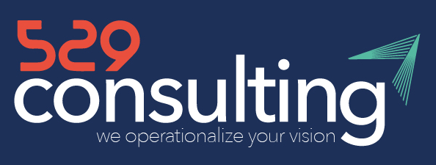60+ Location Practice Management System Implementation
Scalable, Repeatable Approach
Project Outcomes:
Saved $1 mill in OPEX cost annually
Saved .5 FTE per location and .5 FTE at Head office
Transformed data collection and analytics process
Preparation
OUTCOME:
Create business case and validate project ROI and NPV
Determine project scope and timelines
WHAT WE DID:
Analyze current technology environment including costs, variety of systems, and infrastructure requirements
Analyze marketplace to determine options
Put together final business case and receive Sr. team signoff on project
WHAT THE ORGANIZATION DID:
Provide access to resources with understanding of current finances and IT environment
Work with us on goals of the organization
Sign off on business case
-
This phase is key to ensuring the organization understands the project and is aligned to what is trying to be accomplished. If this phase is not done well you could be building to a goal that is not achievable or designing solutions that don’t actually gain the right tangible business results. The length of time in this phase is dependent on the amount of time that the key internal resources can dedicate to the project. This does not and should not need to take a significant amount of time. The key is to find the right level of detail to ensure you have a realistic business case without needing to completely flesh out all of the details.
Outcome 1 - Analyze current technology environment including costs, variety of systems, and infrastructure requirements
Key Activities:
Document all current systems
Create infrastructure design map
Determine IT Infrastructure goals of the organization
Create future state infrastructure design map
Document current costs of network
Key Considerations:
We determined that for this organization the PMS was the most significant source of operational data
The PMS was the central system of the network software stack and all subsequent systems relied on data or workflow of the PMS either directly or indirectly
In creating future state design we determined that automated data extraction and transition between systems was key to the organization's long term goals
Open API became a key requirement for the new PMS
Tools:
Business Case Template
ROI Calculator
Standard Requirements Template
Outcome 2 - Analyze marketplace to determine options
Key Activities:
Create list of top 10 PMS in the industry
Preliminary conversations with vendors to determine what potential partnerships could resemble including projected costs
Create key highlights of each vendor
Determine average expected cost structure for business case
Key Considerations:
This industry was dominated by 4 key systems that managed 90% of the market. The other 10% was managed by much smaller vendors
We were able to determine that based on the strategic requirements of the organization there would only be 5 systems that we needed to evaluate in depth and the cost models would be consistent among them
Outcome 3 - Put together final business case and receive Sr. team signoff on project
Key Activities:
Work with finance team on ROI calculations
Create final business case and present internally
Gain alignment with all key stakeholders
Key Considerations:
We considered 3 different rollout strategies with different time and resources associated. This way we could show the impact to cost and return on investment in each model
There was more cost upside as we had not yet negotiated preferred rates with the vendor
We also showed how capitalizing the cost of resources could help EBITDA
Planning & Design
OUTCOME:
Select the system that best aligns with vision of the organization
Create standard system configurations
Create standard project and change plan
Create standard training program and materials
WHAT WE DID:
Requirements gathering and system analysis
System configurations
Create implementation plan - including project and change plan
WHAT THE ORGANIZATION DID:
Provide an overview of their objectives and business drivers for the project
Selected and allocated team members
Made key decisions with our guidance
-
This is where you do the setup work for the project. If you are using a multi-site approach, then you need to spend some time up front creating a process that is repeatable and scaled to your resources. We have many standard tools that with some customization we can use to quickly organize the tasks that will be required on each implementation. By leveraging those we ensure we do not miss steps and keep the project well organized at all times.
When you are selecting software you should, as much as possible, be system agnostic. Select the system that best meets the fundamental needs of your business and best aligns with your organization's strategic vision. It is important to consider the organizational structure and roadmap of the vendor and ensure that this also aligns with your organization’s future.
Expanded:
Outcome 1 - Select the system that best aligns with vision of the organization
Key Activities:
Work with SME’s to create detailed business requirements for the system
Work with leadership to refine strategic requirements
Submit RFP to the market and invite vendors to respond
Eliminate systems that could not meet business requirements
Set up detailed demos of remaining systems
Create standard evaluation criteria
Evaluate systems and select the vendor that satisfied business requirements and best met strategic requirements
Key Considerations:
Generally the system is chosen because of alignment to strategic requirements and not business requirements
In industries that are fairly mature most systems will cover the business requirements. There is variation in usability and workflow which matters but will not often be the deciding factor
This should be done with a representative cross section of the network so that you get a good variety of opinion but also start to build buy-in to the change that will happen. You want to use this as an opportunity to create your first network advocates.
Tools:
Standard Requirements Template
System evaluation template
Outcome 2 - Create standard system configurations
Key Activities:
Review vendor system configuration guides
Map new system to front line workflows
Gather team of business experts to make decisions
Create system configurations to cover all of the current workflow and gain efficiencies as outlined in business case
Key Considerations:
An organization needs to decide how much variability of practice they want to allow. Generally every location has some uniqueness but what needs to be standard to meet the strategic goals and what can be local
All standards need to be well documented to allow for good system and data governance going forward
Tools:
These are usually tools provided by the vendor
Outcome 3 - Create standard project and change plan
Key Activities:
Break project plan down into phases with outcomes and gates per phase
Work with vendor to understand the steps they would typically take to implement
Leverage our standard change plan template to create change framework and typical change tasks
Integrate both change and implementation tasks together into 1 project plan
Key Considerations:
The project plan and change plan are not different items. They need to be integrated to ensure the project can be executed well
This was a multi-site client and each site had unique process which meant the change plan had to be adjusted for each location but there could still be basic milestones in the initial plan with additions being made by clinic
The unique process at each site meant we needed to include an assessment phase in the initiating period with each site. This was key to make sure we were aligning activity to the needs of that site and to get out ahead of unique risks
Tools:
Standard change plan template
Standard project plan template
Standard Project workbook
Outcome 4 - Create standard training program and materials
Key Activities:
Decide on appropriate training model and resources
Build standard training plan
Create required training materials
Key Considerations:
Approx how many people would be trained at the same time
What is the appropriate learning model for your organization (tell me, show me, let me try, test me)
How long is required for training and how does that affect your project budget
Integrate both system and process changes into the training
Execution
OUTCOME:
Execute change and adjust as you go
WHAT WE DID:
Directed all aspects of the execution including managing timelines, budget and the project team.
Mentored the rest of the team throughout the project ensuring they grew their skills and remained engaged throughout the project
Monitored the team environment to enable adoption.
WHAT THE ORGANIZATION DID:
Sr. management visibly endorsed the change with their team and received regular updates to help steer the direction of the project.
The team helped execute the project tasks and learned and adapting to the new system
-
If you have built your implementation program well this should be relatively rinse and repeat. Of course, every implementation will present its own challenges.Your project leaders need to be very skilled and organized in managing risks and issues that come up.
Key Activities:
Execute project plan
Execute change plan
Provide regular updates to leadership
Actively manage risks
Evaluate the success of each implementation
Lessons learned and continuous improvement after each site implementation
Key Considerations:
Your project team should be learning and building their skill as the project continues
Do not move through your execution just because time has passed or some tasks were complete. Always ensure you are actually achieving the goals before moving to the next phase
Identifying and managing risk in a systematic way is crucial to a successful project
Tools:
The tools created in the previous phase were used here
Monitoring
OUTCOME:
Evaluate the key performance measures of the project and the overall success
Document lessons learned and close the project
WHAT WE DID:
We continued to lead the team and the project until all outcomes were verifiably achieved.
In locations where they were not achieving the goals we used observation and analysis to identify the root of the issue and adjust as needed so that the goals were realized.
Worked with the team to ensure they understood and had the skills to sustain the changes that were made.
WHAT THE ORGANIZATION DID:
Sr. Management helps validate the financial outcomes of the project.
The team works with us through any adoption issues that may arise.
-
Measure your results to validate you achieved what you set out to. This should include financial results, efficiency measures, and team experience. In order to claim the project as fully successful, you should have achieved your goals in all of these.
Outcome 1 - Evaluate the key performance measures of the project and the overall success
Key Activities:
Evaluate KPI that was designated for the success of the project
Validate financial outcomes
Ensure sustainability plan is in place and in execution
Key Considerations:
How well did you perform compared to the initial expectations of the project
Who needs to validate your results
Outcome 2 - Document lessons learned and close the project
Key Activities:
Interviews with key project team and other stakeholders
Document successes and opportunities for future improvement
Celebrate your success as a team
Key Considerations:
Did you achieve all of the goals of the project, if not why not and are there things you can adjust to achieve the goals
What can be learned by the organization for future changes
What was the teas experience through the project





